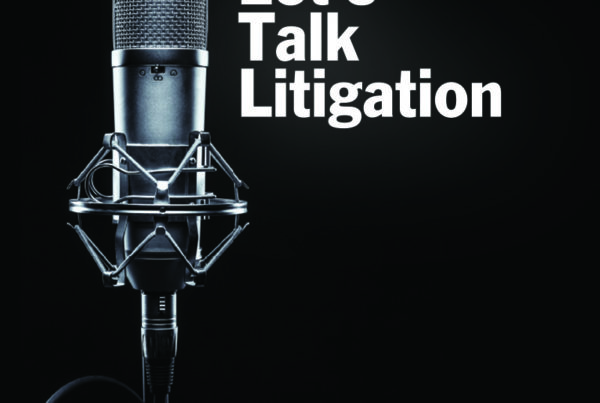 Opioids & Heroin: Mixing Semantics
Opioids & Heroin: Mixing Semantics
Opium is a bitter, brown, granular powder derived from the seedpod of the poppy.
People have used opium for the relief of pain for thousands of years. [1]But a quick word on terminology: Opiates are drugs derived from the opium poppy. On the other hand, Opioids are synthetic, or partly-synthetic drugs that are manufactured to work in a similar way to opiates. Whether a derivation or synthetic formulation, the brain and body’s response is the same. Opioids are indeed legal heroin.[2]
Mass Production of Opioids & Introduction of Regulatory Controls
During the 19th century, several historical events conspired to make opium and opioids more readily available.[3] Morphine, an opioid distilled from opium, was first discovered in 1804 in Paderborn, Germany by Friedrich Seturner.[4] Morphine was initially marketed as a panacea for all sorts of diseases, including treatment of the “boredom” of Victorian women and even alcohol addiction.
Heroin was ultimately derived from morphine and produced commercially in the late 1800s. Heroin was first used as an alternative to morphine and even marketed as a remedy for morphine addiction. It was widely prescribed to everyone, including children, and even marketed as “safe” and non-addictive. However, it was quickly discovered that heroin was addictive and was ultimately classified as an illegal drug in the U.S. in 1924.
With the rise of the “street use” of opium and heroin, legal controls were introduced. In the United States, the first attempts to control the abuse of narcotics came at the end of the 19th century, when a few states instituted limited controls. By the 1940s, opioids were so tightly restricted that they could be used legally only when they were prescribed by physicians according to strict regulatory controls.
The legal use of opioids was thus placed entirely in the hands of physicians who were, and still are, solely responsible for dispensing these drugs appropriately.
An Epidemic of Pain?
Critics argued that the strict regulatory controls regarding the dispensing of narcotic drugs made physicians reluctant to prescribe opioids, and consequently chronic pain went woefully undertreated.[5] “Through the efforts of advocates of pain control, toward the end of the 20th-century opioid therapy was reestablished as an invaluable and accepted treatment method of acute pain, pain due to cancer, and pain caused by a terminal disease.”
Pain advocates argued that the United States was indeed facing an epidemic—an epidemic of untreated pain. To this day, they often cite statistics that nearly 100 million people in America suffer from chronic pain.
The number—the equivalent of more than 40% of the U.S. population – has been shown by pain experts to be exaggerated and misleading. [6]The number, in fact, came out of a report ordered by Congress that was introduced by lawmakers who have received hundreds of thousands of dollars from drug manufacturers. Dr. Michal Von Korff, the author of the paper from which the “100 Million” figure was derived, stated himself that he didn’t like the 100 million number “because I think it is a little misleading.”[7]
Pendulum Swings: Opioids Claimed to be Non-Addictive
The pendulum began to swing, and doctors—fueled by sweeping (and often misleading) marketing campaigns driven by the pharmaceutical industry—began prescribing opioids to treat what they were being told was an epidemic of untreated pain.[8]
Reports began to surface that opioids could be useful without causing addiction. These studies were often taken out of context—and taken to stand for propositions for which they didn’t stand.
A prominent example is a famous paragraph by Dr. Hershel Jick, a doctor at Boston University School of Medicine. Dr. Jick pondered the question of how often patients given narcotic painkillers, in a hospital, grew addicted. He analyzed a set of data in a database. Then, he wrote a single paragraph in the New England Journal of Medicine which stated, “of almost twelve thousand patients treated with opiates while in a hospital…only four had grown addicted.” The paragraph bore the title: “Addiction Rare in Patients Treated with Narcotics.”
There was no data about how often how long, or at what dose these patients were given opiates, nor the ailments the drugs treated. It was a paragraph—not a study – and it had absolutely nothing to do with the risk of addiction when opioids are used daily for a prolonged time in treating chronic non-cancer pain. The paragraph simply cited the number and made no claim beyond that.
Yet pharmaceutical companies—including Purdue Pharmaceuticals, the maker of Oxycontin—cited this study when claiming that the risk of addiction was “less than one percent.” Other prominent pain-care advocates, including Dr. Russel Portnoy, made similar assertions: Less than 1% of opioid users became addicted, the drugs were easy to discontinue and overdoses were extremely rare in pain patients.[9] Many of these doctors, including Dr. Portnoy, have recently recanted their claims—which were relied on for decades—and now say those claims were not based on sound scientific evidence:
“Did I teach about pain management, specifically about opioid therapy, in a way that reflects misinformation? Well, against the standards of 2012, I guess I did,” Dr. Portenoy said in an interview with The Wall Street Journal.[10] He went on to say that he “gave innumerable lectures in the late 1980s and 90s that weren’t true.”
The medical profession, including touted “experts” in pain management, has thus built and fueled the opioid epidemic—making claims that were not and are not supported by any scientific evidence. Doctors have been using opioids on autopilot. A growing body of evidence now suggests that even transient bursts of opioids on first exposure can contribute to the development of chronic addiction. A third of patients who receive opioids after spine surgery continue using them a year out, according to one study. Additionally, while tolerance to the analgesic effect of the drug occurs, opioid users do not build a tolerance to any of the side-effects and continue to face the same severe side-effects of the drug.[11] Furthermore, long-term opioid use, which comes with innumerable risks and side effects, arguably has almost zero benefits in treating chronic pain in non-cancer patients.[12]
Yet doctors across America continue to prescribe massive amounts of opiates to patients who should never have been on opiates in the first place. And inevitably, some of these patients pushed into the jaws of America’s opioid epidemic.
The victims of America’s opioid epidemic should not be treated as a statistic. Their stories are devastating and real. The Simon Law Firm, P.C. wants to hear about your personal experience, however, you’ve been affected. We invite you to share your story in the provided survey and we’ll continue the conversation about the growing opioid crisis in the coming weeks.
View PBS’ Documentary by clicking here.
[1] Jane C. Ballantyne M.D., & Jianren Mao, M.D., Ph.D., Medical Progress: Opioid Therapy for Chronic Pain, 349 New Eng. J. Med, 1943 (2003).
[2] Prescription Opioid Narcotics and Heroin, Advocates for Reform of Prescription Opioids, http://www.rxreform.org/prescription-opioids/similarities-to-heroin/ (last visited Aug 10, 2016).
[3] Ballantyne, supra at 1943.
[4] Sam Quinones, Dreamland: the true tale of America’s opiate epidemic.
[5] John Fauber, Chronic Pain Statistics Called Exaggerated, Misleading, Milwaukee Journal Sentinel, June 25, 2014, http://archive.jsonline.com/watchdog/watchdogreports/chronic-pain-statistic-called-exaggerated-misleading-b99287713z1-264515601.html (last visited Aug 10, 2016).
[6] Id.
[7] Id.
[8] Sushrut Jangi, M.D., How Did The Opioid Epidemic Get So Bad?, The Boston Globe, March 29, 2016, https://www.bostonglobe.com/magazine/2016/03/29/how-did-opioid-epidemic-get-bad/qkb8DnUzwYLjWSQsZgGpqJ/story.html (last visited Aug 10, 2016).
[9] Thomas Catan & Evan Perez, A Pain-Drug Champion Has Second Thoughts, The Wall Street Journal , December 17, 2012, http://www.wsj.com/articles/SB10001424127887324478304578173342657044604 (last visited Aug 10, 2016).
[10] Id.
[11] Christina J Hayhurst & Marcel E Durieux, Opioid Overdoses: The Price of Tolerance Scientific American (2016), http://blogs.scientificamerican.com/guest-blog/opioid-overdose-the-price-of-tolerance/ (last visited Aug 10, 2016).
[12] Id.







